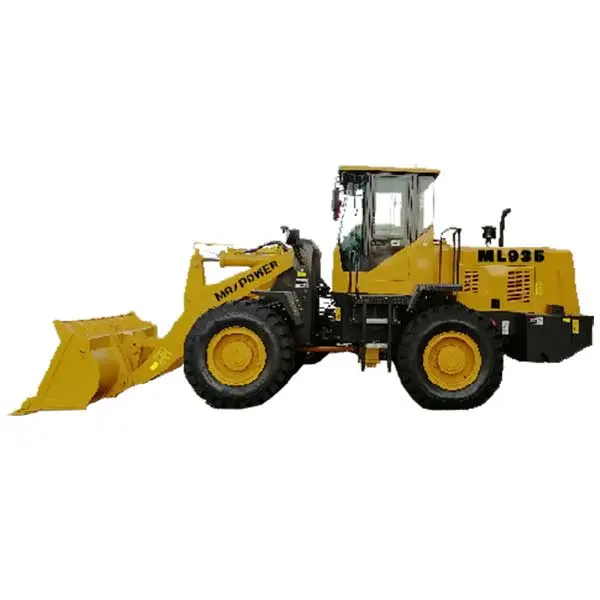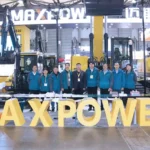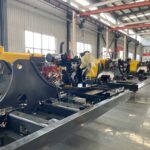مقدمة
When undertaking construction, landscaping, or agricultural projects, the versatile wheel loader can be an extremely valuable piece of heavy equipment. Wheel loaders are capable of tasks like digging, grading, loading trucks, and more. However, with different manufacturers and multiple models to choose from, selecting the right wheel loader for your specific needs can seem overwhelming. This guide will walk through the key factors to consider when choosing a wheel loader to ensure you pick the machine that best fits your application and budget.
Wheel loader bucket sizes and types

One of the most important specifications to consider is the bucket size and type. Wheel loaders are available with a wide range of standard and specialty buckets to handle different materials. For general construction projects involving digging dirt, moving aggregates, or loading trucks, a general-purpose bucket between 1-3 cubic yards is a good starting point. Larger buckets around 4-6 cubic yards may be preferable for large-scale earthmoving. Narrower and taller pinch-point buckets are well-suited for handling materials like sand, while grapple buckets can pick up debris, logs, and scrap more efficiently. Consider what exact materials you’ll be moving most to determine the optimal bucket for the job.
Horsepower and Operating Weight Class
Wheel loaders are broken into general weight classes that correspond to their power and capabilities. Lighter-duty compact loaders under 10,000 lbs are suited for landscaping, utility, and light construction work. Small wheel loaders between 10,000-20,000 lbs can handle basic excavation, loading, and site work. Mid-sized loaders 20,000-35,000 lbs have greater breakout force for heavier digging and truck loading. Large 35,000-50,000 lb models are best for heavy excavation, quarry work, and large stockpiles. Consider the size and difficulty of your project tasks to determine the minimum horsepower and weight class needed. Heavier classes allow working in tougher conditions but have higher owning and operating costs.
Table: Common Wheel Loader Weight Classes and Applications
| Weight Class | Typical Applications |
|---|---|
| Compact (Under 10,000 lbs) | Landscaping, land clearing, light construction |
| Small (10,000-20,000 lbs) | Basic excavation, loading, utility work |
| Mid-sized (20,000-35,000 lbs) | Heavier digging, truck loading, site work |
| Large (35,000-50,000 lbs) | Heavy excavation, quarries, large stockpiles |
Auxiliary Hydraulics and Attachments

Most wheel loaders come equipped with auxiliary hydraulic connections and piping to power attachments like forks, brooms, augers, and more. Having this capability opens up the potential uses of the machine. Consider whether you may want to utilize different attachments in the future that would require hydraulics. Additionally, check that any intended attachments are compatible with the loader’s auxiliary hydraulic flow and pressure ratings. Not all loaders can handle heavy, high-flow attachments.
Fuel Efficiency and Operating Costs
The fuel efficiency of wheel loaders can vary significantly between models. Heavier-duty, more powerful machines tend to be less fuel efficient. Consider your expected annual operating hours and fuel costs when choosing a model. Fuel-efficient Tier 4 Final engines are now standard on new loaders and can help lower long-term costs. Additionally, compare maintenance schedules and component life expectancies between brands. Higher initial costs may be offset by reduced long-run expenses. Reliability is also important – choose a brand with a strong dealer network for support.
Lifting Capacity and Tipping Load
Lifting capacity refers to how much weight a wheel loader’s lifting arms can safely raise. Tipping load is the maximum weight it can lift before becoming unstable. Compare specifications to ensure the loader you select has adequate lifting ability for your heaviest anticipated loads, whether lifting full buckets, bales, or other materials. OEM-rated capacities should not be exceeded.
Operator Comfort and Ergonomics
Modern wheel loaders offer high-quality operator stations with features like air suspension seats, climate control, low-effort joysticks, and infotainment systems. These comforts help reduce fatigue over long workdays. Consider options like cab suspension, auxiliary climate control, and premium seats that improve the operator experience. Good all-around visibility is also important for safety.
Resale and Life-Cycle Costs
When factoring in the total cost of ownership, consider the expected resale value of different brands down the road. Major manufacturers tend to hold their value better as their products are in higher demand in the used equipment market. Additionally, life-cycle costs matter – a more expensive loader may actually be more affordable long-term if it has lower operating costs and a longer useful life before needing replacement.
Warranty and Dealer Support
New wheel loaders usually come with at least a 1-year limited warranty on parts and labor from the OEM. Additionally, most dealers offer extended warranty plans for an extra cost. Weigh the coverage periods and included components between brands. Also evaluate the reputation and size of the local dealer – you want a dealership that will stand behind the product long-term with service, parts availability, and tech support. A strong dealer is important for keeping uptime high.
خاتمة
Choosing the right wheel loader requires evaluating your specific application needs and balancing priorities like capacity, productivity, costs, and comfort. Take time to thoroughly research specifications and compare models from different manufacturers. Consulting experienced dealers is also wise. With the right machine well-matched to the tasks at hand, a wheel loader can prove extremely versatile and help boost efficiency on a wide variety of jobsites for many years.
الأسئلة الشائعة
Q: What is the typical price range for new wheel loaders?
A: Compact loaders under 10,000 lbs typically sell in the 80,000−80,000−120,000 range. Small 10,000-20,000 lb loaders are 100,000−100,000−150,000. Mid-sized 20,000-35,000 lb models range from 150,000−150,000−250,000. Large 35,000-50,000 lb loaders can be 250,000−250,000−400,000 or more depending on the configuration. Used equipment prices vary depending on age and condition.
Q: How long does a wheel loader typically last?
A: With proper maintenance and care, wheel loaders can have productive working lives of 10-15 years of regular use before needing replacement or a major overhaul. Hours on the machine are a better indicator of condition than just age. Compact loaders may last 8-10 years, while large quarry-duty loaders could exceed 15 years before needing replacement undercarriage or other components.
Q: What fuel does a wheel loader use?
A: Virtually all wheel loaders are diesel-powered and use diesel fuel. Diesel provides good torque and power for heavy-duty work. Newer Tier 4 Final engines may require the use of ultra-low sulfur diesel (ULSD) fuel.
Q: Can wheel loaders operate on slopes safely? What is the maximum grade?
A: Wheel loaders are very stable machines but do have limitations on slopes. Most manufacturers rate their loaders for continuous operation up to a 15-20 degree side slope or grade. Steeper slopes up to 30 degrees can be traversed slowly and carefully when loaded. Exceeding these angles risks tipping over. 4WD improves stability compared to 2WD models.







-150x150.webp)
